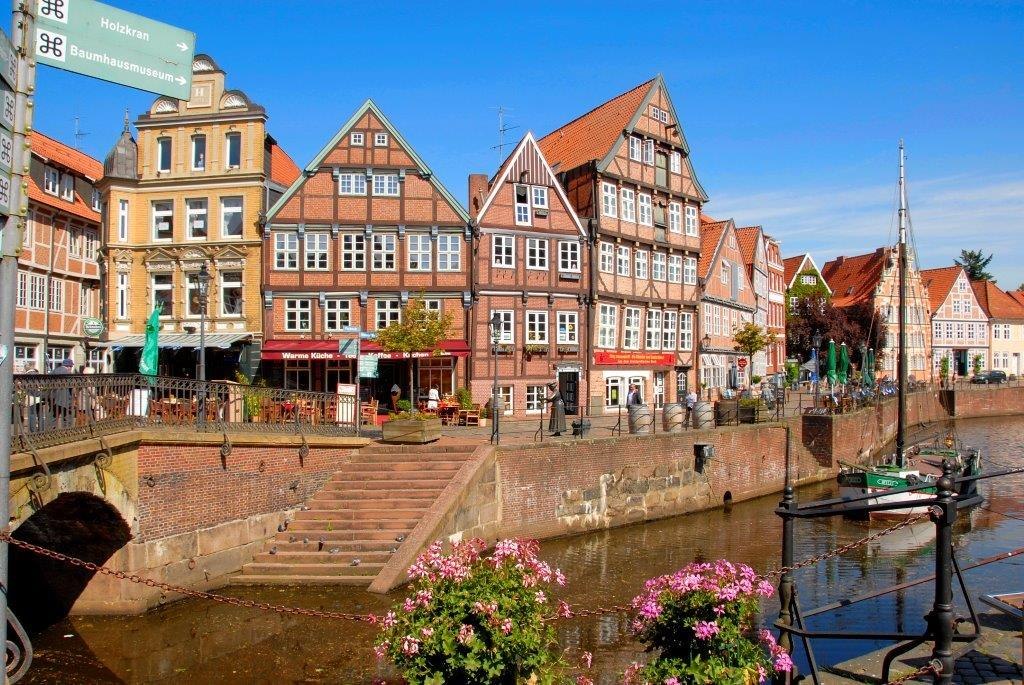Take the Mönchsweg cycle path and follow in the footsteps of the missionaries who brought Christianity to the North. The route takes scenic paths from Bremen through Niedersachsen (Lower Saxony), Schleswig-Holstein and Denmark. The 190 km route connects the north German countryside from the Weser river to the Elbe.
Route and sights
From Bremen Cathedral, cyclists head through the Bürgerpark country park and reach the lush green Wümmeniederung (Wümme Depression) in no time at all. The marsh areas connect Bremen to the picturesque art colony and village of Fischerhude. From here, the Mönchsweg trail snakes along the lowlands by the Wümme and Wieste rivers to the low, sandy heaths of the Zevener and Stader Geest. Two old abbey complexes in Zeven and Harsefeld are head-turners along the way. Visitors can immerse themselves in the history of Harsefeld on a walk through the archabbey complex or the Garten der Steine (Garden of Stones).
The journey through Altes Land, the largest fruit-growing region in northern Europe, is fascinating. Depending on the season, visitors will encounter either a sea of blossoms or trees festooned with fruits. They can see major ships from all over the world from the Elbe dyke. The Hanseatic port of Stade has managed to preserve its medieval charm to this day. With its half-timbered houses and countless cafés, Stade is a great place to stay. Cyclists pedal through moorland and marshes to reach the Wischhafen-Glückstadt ferry. Once they have crossed the Elbe river, they continue on their journey to Glückstadt. Along the Stör tributary, via Krempe, Wilster and Itzehoe, cyclists come to the ceramic town of Kellinghusen. The route carries on through the countryside of Holstein Switzerland with its idyllic lakes, to Neustadt in Holstein and Grömitz on the Baltic Sea coast, finally passing Oldenburg in Holstein and Heiligenhafen to Puttgarden on the island of Fehmarn in the Baltic Sea. In Denmark, the route continues from Rødby to Roskilde as the “Munkevejen”.
The Mönchsweg trail combines nature and culture, and truly appeals to cyclists’ hearts and souls. Cyclists can collect memories of churches and stops along the Mönchsweg trail in their pilgrim’s passport, which is available free of charge from tourist information offices along the way.



